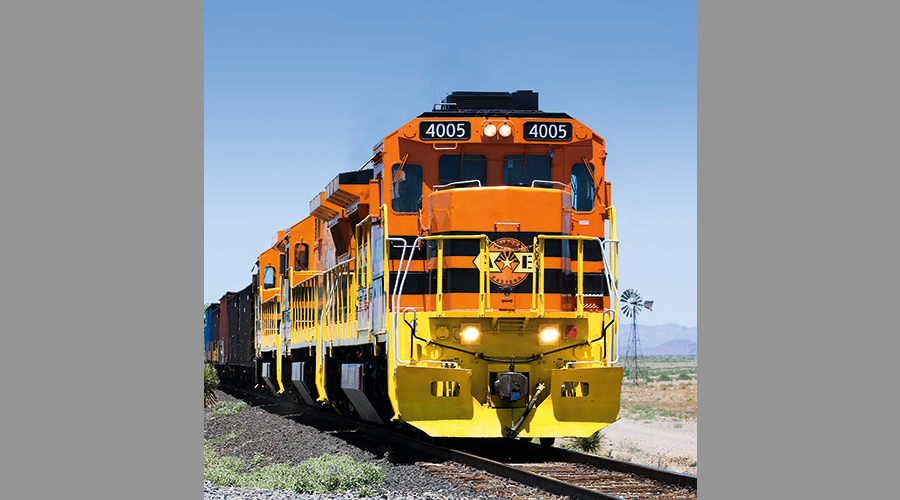Stay updated on news, articles and information for the rail industry
April 2008
Rail News: Short Lines & Regionals
Short Line Story: Brownsville & Rio Grande
A Texas short line situated near the U.S.-Mexican border can trace a decade-long traffic boom to one major contributing factor: the North American Free Trade Agreement (NAFTA).
The Brownsville & Rio Grande International Railroad (B&RG) has boosted carloads from about 10,000 in 1996 to more than 40,000 in 2006 primarily by leveraging its interchange partnership with Kansas City Southern de México S.A. de C.V. (KCSM) and combining rail with water service through the Brownsville Navigation District of Cameron County, Texas.
And the short line expects the international-flavored traffic to keep increasing.
“NAFTA has been a big boost to our business, with about 90 percent of our carloads being NAFTA-related,” says B&RG President and Chief Operating Officer Norma Torres.
The Port of Brownsville created B&RG in 1984 to operate 43 miles of track within the port complex after the Missouri Pacific Railroad withdrew as service provider in 1983.
The short line interchanges with Union Pacific Railroad (which acquired Missouri Pacific) and KCSM. B&RG also interchanges with BNSF Railway Co. via a UP/BNSF haulage agreement under which UP moves BNSF traffic from Houston to Brownsville.
Branching out
In 1997, the short line assumed service over a five-mile UP branch line, which added 14 customers to the four stevedore operators and 28 industries already served by the port.
One of the largest chunks of B&RG’s NAFTA-related business is steel traffic.
“It comes in either by barge or ship and is transferred to cars supplied by KCSM,” says Torres.
B&RG makes up a steel train and delivers it to UP’s yard in Olmito, Texas. The train then moves across the Brownsville & Matamoros International Bridge, where crews are swapped in the middle of the structure. A KCSM crew moves the train into Mexico.
In addition to moving steel heading south, B&RG generates about 5 percent of its traffic volume from steel moving north into the United States. The short line also handles petroleum liquids, lube oils, asphalt, scrap and plastic pellets.
Most of B&RG’s freight charges are integrated into rates set by KCSM and the port, which are jointly trying to ensure the NAFTA-related business continues to grow, says Torres.
“Both have worked together on pricing to attract and hold business, with the rail rate and port fee reflecting volume incentives,” she says, adding that the short line also provides volume discounts to some shippers.
A new service starting later this year also might mean more NAFTA-related traffic is heading B&RG’s way. Container-on-barge carrier SeaBridge, which currently offers service between Brownsville and Tampa, Fla., plans to moves containers between Monterrey, Mexico, and Brownsville.
“While the initial movement will be by highway, we hope that rail will play a role, which could benefit our railroad,” says Brownsville Director of Cargo Services Tony Rodriguez.
— By Walter Weart, a Denver-based free-lance writer.
CONTENTSBrownsville & Rio Grande |


 2025 MOW Spending Report: Passenger-rail programs
2025 MOW Spending Report: Passenger-rail programs
 Gardner steps down as Amtrak CEO
Gardner steps down as Amtrak CEO
 Guest comment: Oliver Wyman’s David Hunt
Guest comment: Oliver Wyman’s David Hunt
 Women of Influence in Rail eBook
Women of Influence in Rail eBook
 railPrime
railPrime







